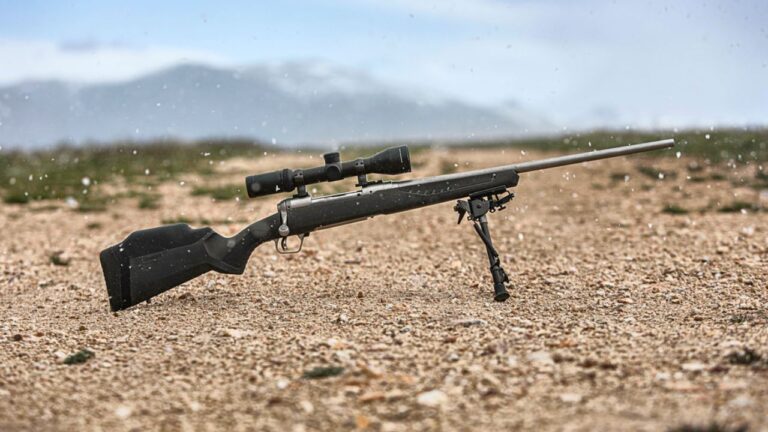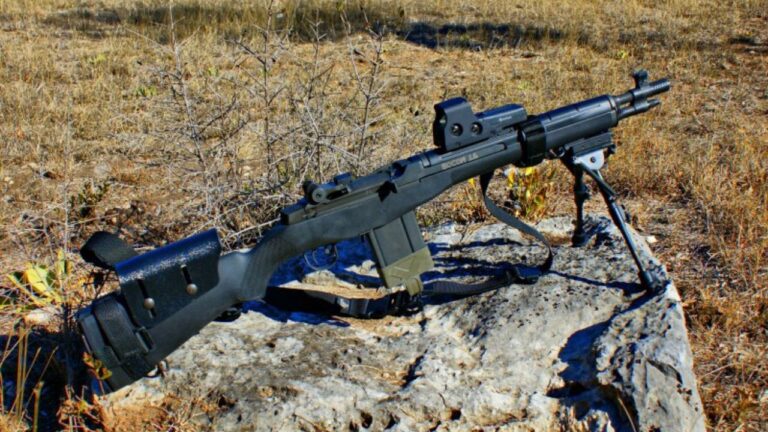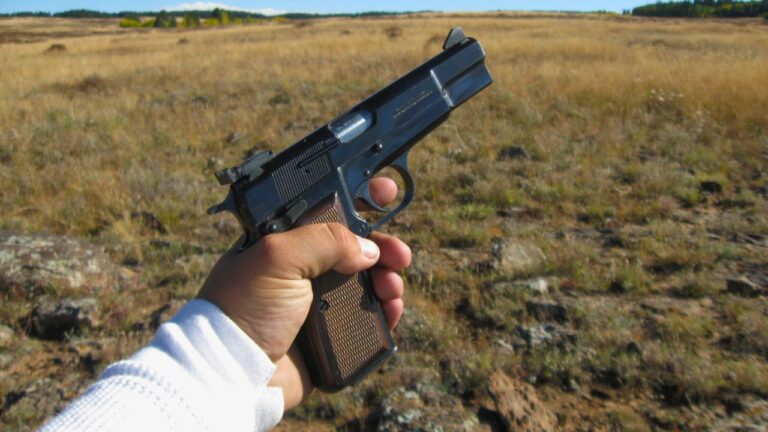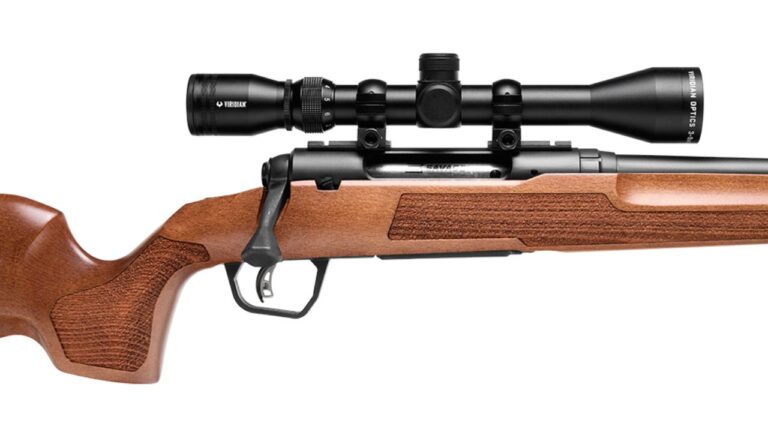For centuries, dueling pistols were more than weapons—they were symbols of honor, reputation, and, sometimes, survival. These finely crafted firearms were designed for one purpose: deciding disputes when words failed. From European aristocrats to American politicians, dueling was a deadly tradition that shaped history. The pistols themselves became legendary, often linked to dramatic confrontations where skill, nerve, and fate collided. Each of these examples played a role in moments where lives and reputations hung in the balance, leaving a lasting mark on history.
Wogdon & Barton Pistols
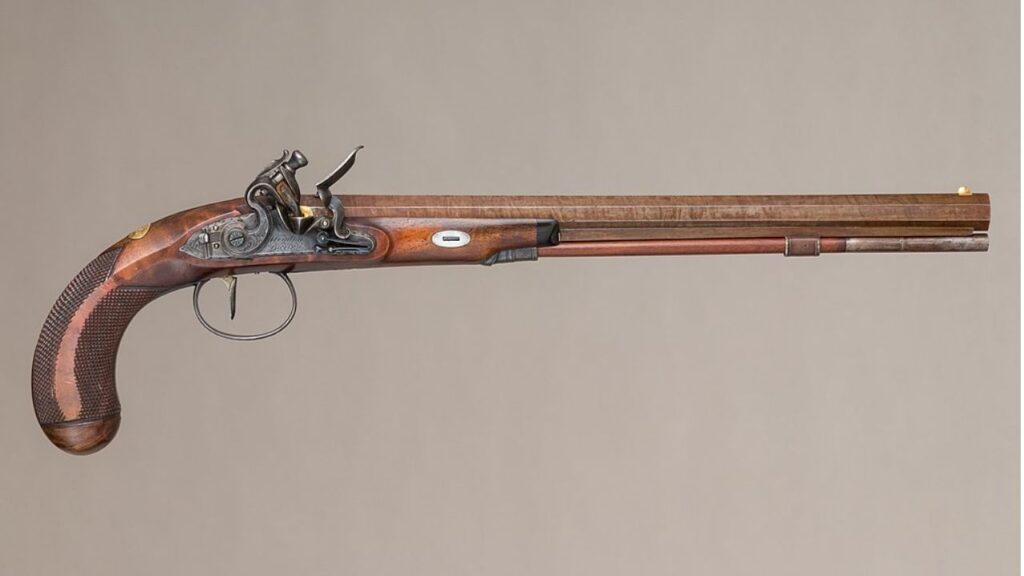
Robert Wogdon’s name became synonymous with dueling in the late 18th century, and his pistols were considered the gold standard among gentlemen. Crafted in London, these .54-caliber flintlocks were prized for their balance, accuracy, and consistent performance under pressure.
Wogdon pistols were famously used in the 1804 duel between Alexander Hamilton and Aaron Burr. Their precision and quality influenced the outcome of countless high-profile confrontations, cementing their place as some of the most significant dueling pistols in history.
Manton Flintlock Pistols
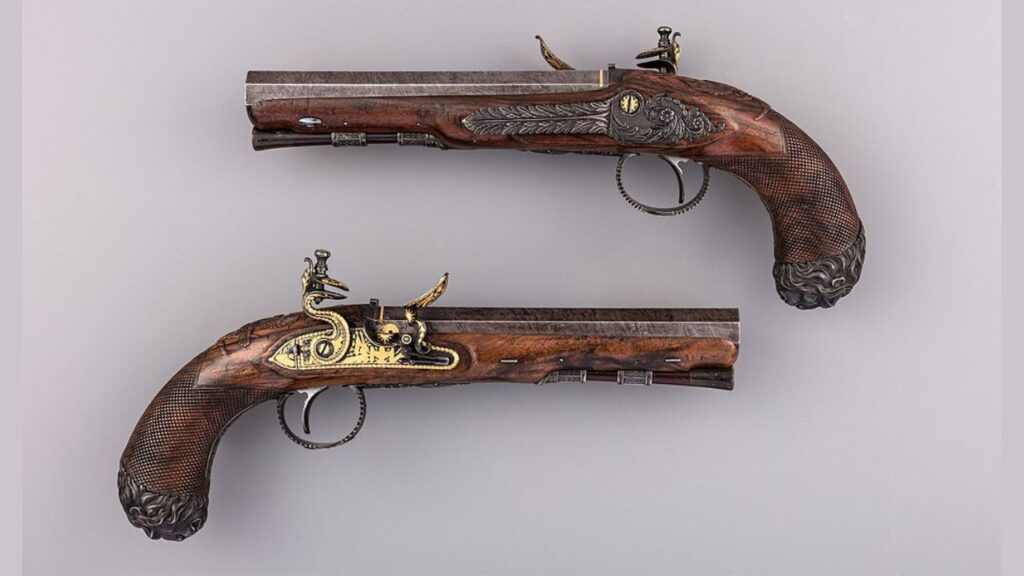
Joseph Manton, one of Britain’s finest gunmakers, produced highly regarded dueling pistols in the early 19th century. His .54-caliber flintlocks were engineered for reliability and precision, giving duelists every possible advantage.
Manton’s craftsmanship earned him an elite clientele, including aristocrats and military officers. His pistols were often paired, ensuring both participants had evenly matched weapons. Known for their smooth triggers and balanced handling, Manton flintlocks played a central role in numerous duels across Europe’s upper classes.
Deringer Percussion Pistols
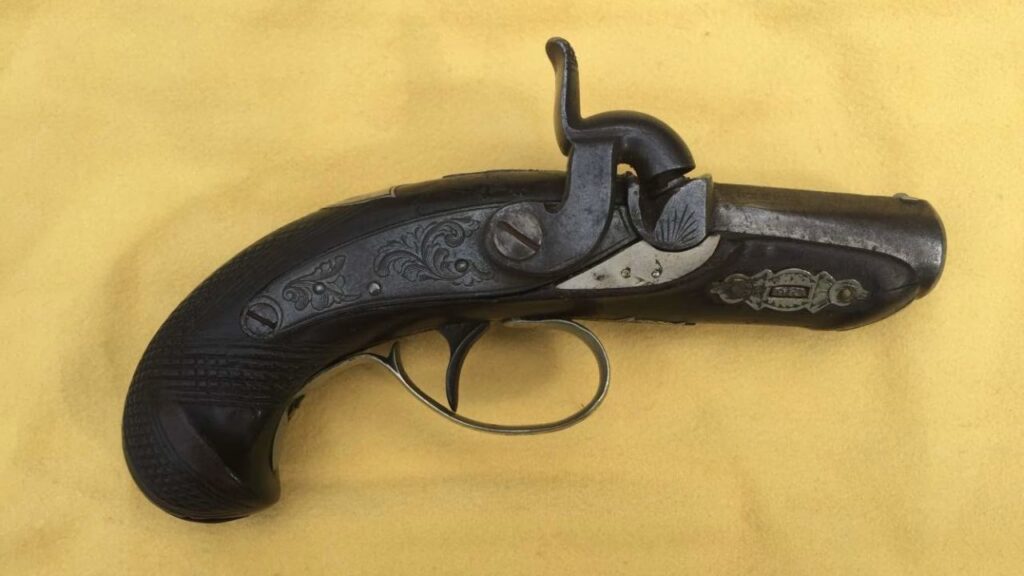
Henry Deringer’s small, .41-caliber percussion pistols became infamous after one of America’s most shocking showdowns. While not typically used in formal duels, John Wilkes Booth used a Deringer to assassinate President Abraham Lincoln in 1865, cementing the pistol’s place in history.
Before that tragic event, Deringer’s designs were popular among gentlemen seeking concealable yet accurate weapons for personal disputes. Their compact size and reliable ignition made them practical choices when tensions rose, giving them a lasting legacy in the world of high-stakes confrontations.
Boutet Versailles Pistols
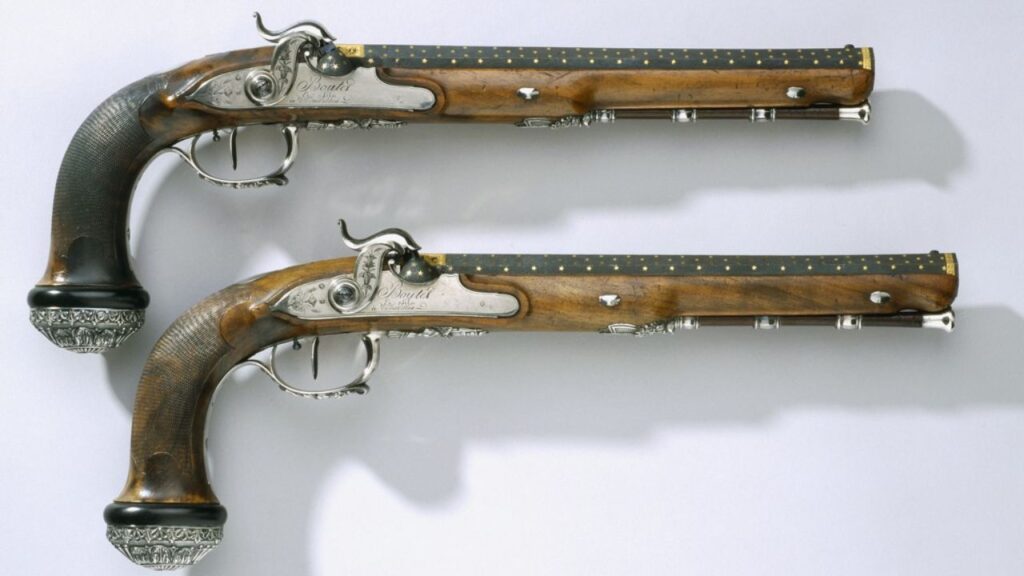
Nicolas-Noël Boutet, the chief gunsmith of Napoleon’s Versailles Armory, produced some of the most elegant and effective dueling pistols of the early 19th century. These .50-caliber flintlocks were highly decorated yet functionally precise, making them favorites among Europe’s elite.
Boutet’s designs combined craftsmanship with performance, giving duelists exceptional control and accuracy. Known for their ornate details and balanced feel, his pistols weren’t just tools of survival but also works of art that carried prestige in French high society and beyond.
Rigby Percussion Pistols
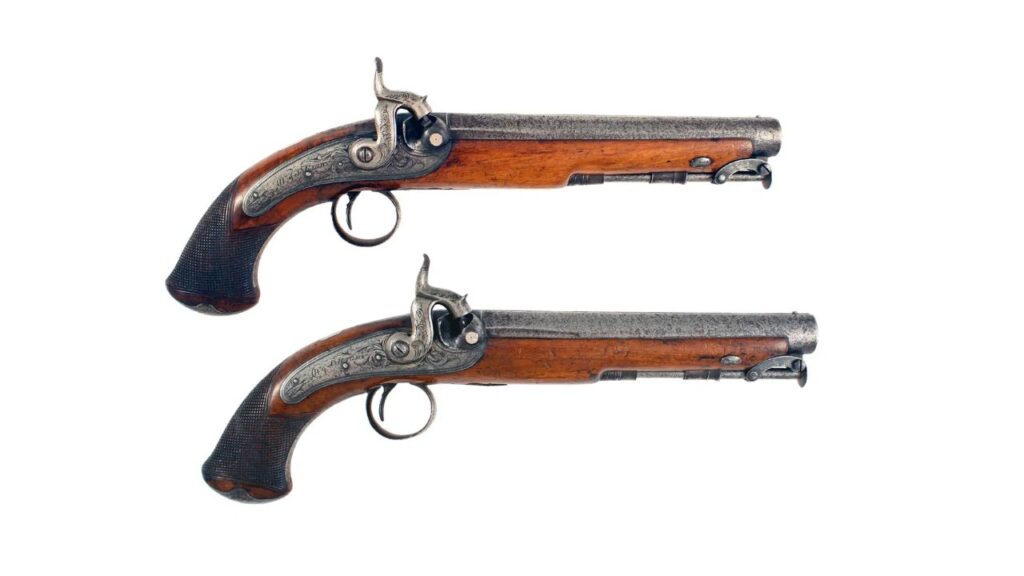
Dublin-based gunmaker John Rigby was known for producing exceptionally accurate dueling pistols in the mid-19th century. Chambered in .45 caliber, these percussion pistols offered consistent ignition and smooth handling, giving shooters confidence under intense pressure.
Rigby pistols became a top choice for both Irish and British duelists seeking a technical advantage. Their precision engineering and reliability influenced firearm development for decades, making them some of the most respected pistols among competitive marksmen and participants in formal duels alike.
Le Page Paris Pistols
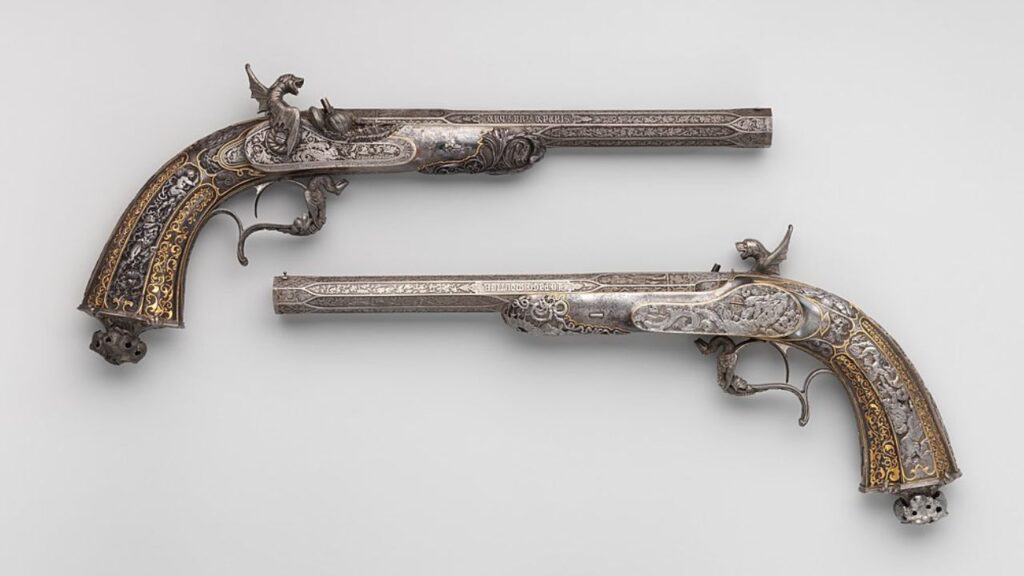
Jean Le Page’s Paris workshop became a hub for dueling pistol innovation during the late 18th and early 19th centuries. His flintlock and percussion models, typically in .50 or .54 caliber, earned a reputation for superb balance and elegant design.
Le Page pistols were widely used among European nobility and officers, where honor-driven confrontations were common. Known for their refined triggers and consistent accuracy, they were considered some of the finest pistols available, ensuring they played a prominent role in countless high-profile showdowns.
Mortimer Dueling Pistols
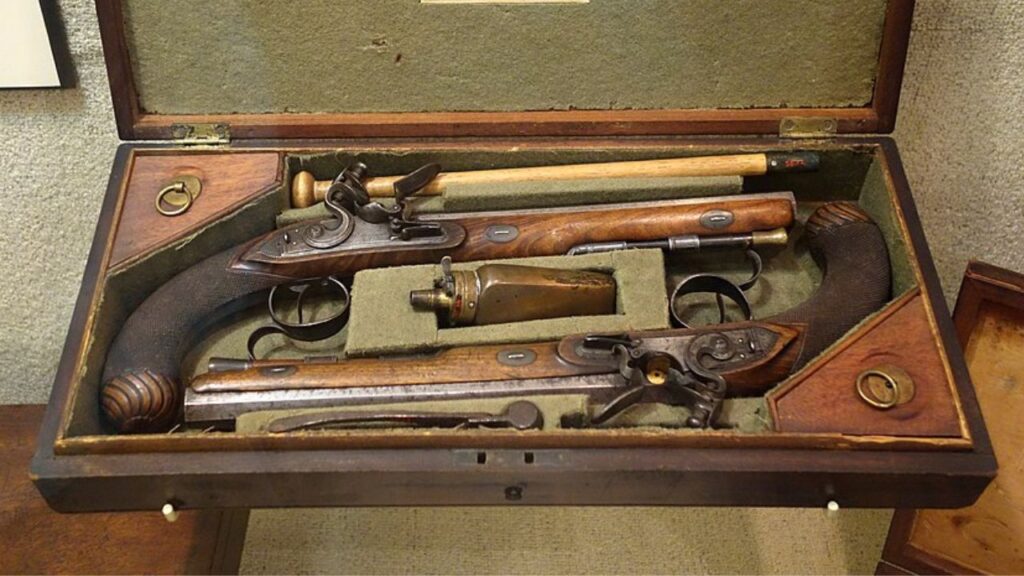
London gunsmith John Mortimer produced finely tuned flintlock and percussion dueling pistols in the late 18th century, typically chambered in .54 caliber. His work was known for precise machining, clean triggers, and well-balanced construction.
Mortimer’s pistols were highly sought after among gentlemen seeking fairness and accuracy in duels. Their reliability earned them a reputation across Britain and Europe, often appearing in historical records of conflicts among political leaders, military officers, and wealthy elites who demanded performance under extreme pressure.
Tranter Revolvers
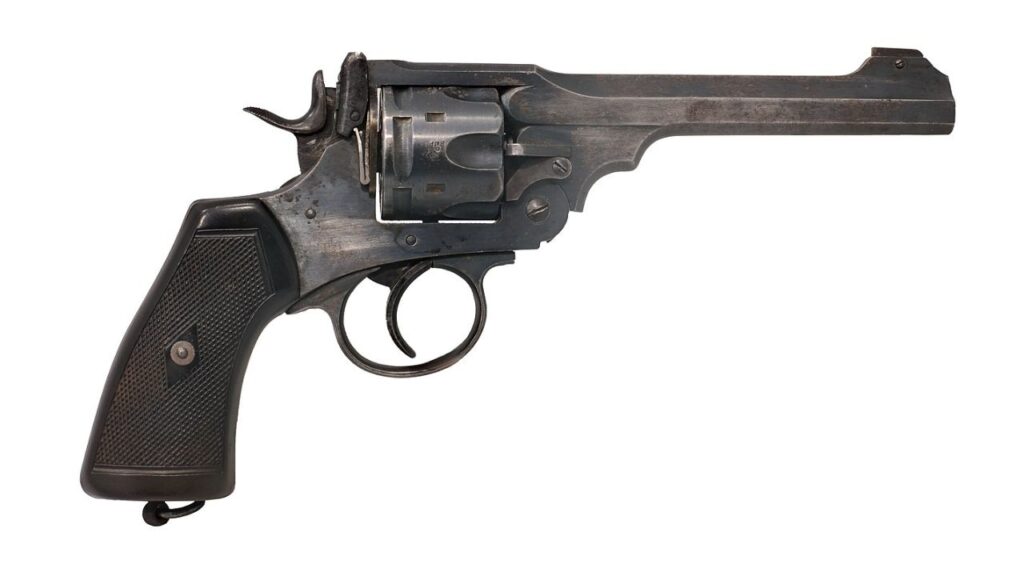
While traditional dueling pistols dominated early confrontations, William Tranter’s revolvers, chambered in calibers like .442, marked a shift in personal defense and settling disputes. These double-action designs allowed faster follow-up shots, changing how confrontations unfolded.
Though not widely used in formal duels governed by strict rules, Tranter revolvers became popular among individuals who expected unexpected encounters. Their speed and reliability influenced the evolution of dueling firearms, bridging the gap between single-shot flintlocks and the revolvers that shaped 19th-century firearm tactics.
Purdey Dueling Pistols
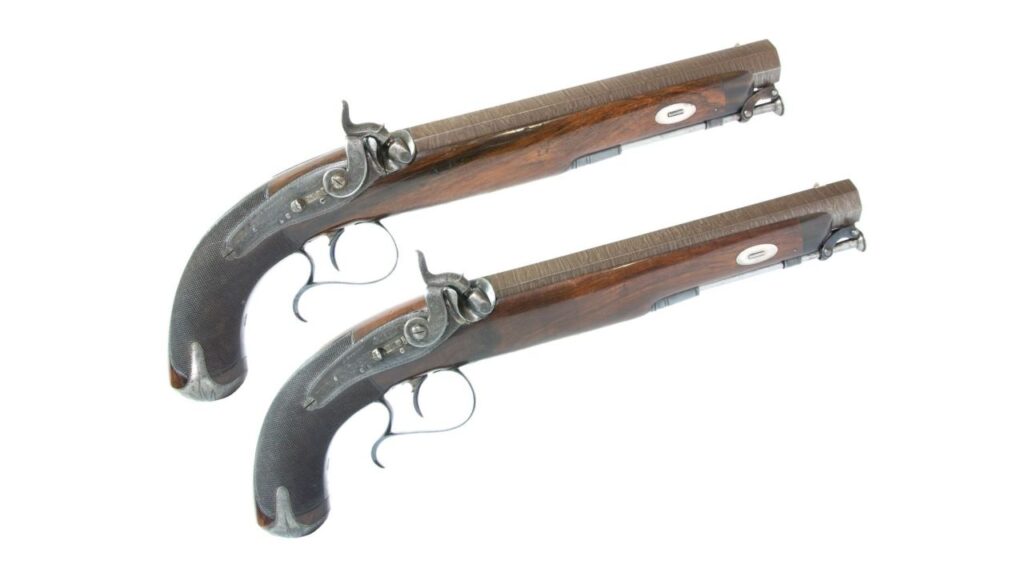
James Purdey’s London-based workshop produced some of the most refined percussion dueling pistols of the 19th century. Known for their .50-caliber precision barrels and meticulously tuned locks, Purdey’s firearms delivered exceptional consistency.
Favored by Britain’s wealthy elite, Purdey pistols combined understated elegance with practical accuracy. Their flawless craftsmanship made them an enduring choice among high-profile duelists and collectors alike. Even today, surviving examples are prized for both their historical significance and their contribution to advancing firearm precision.
Colt Model 1851 Navy
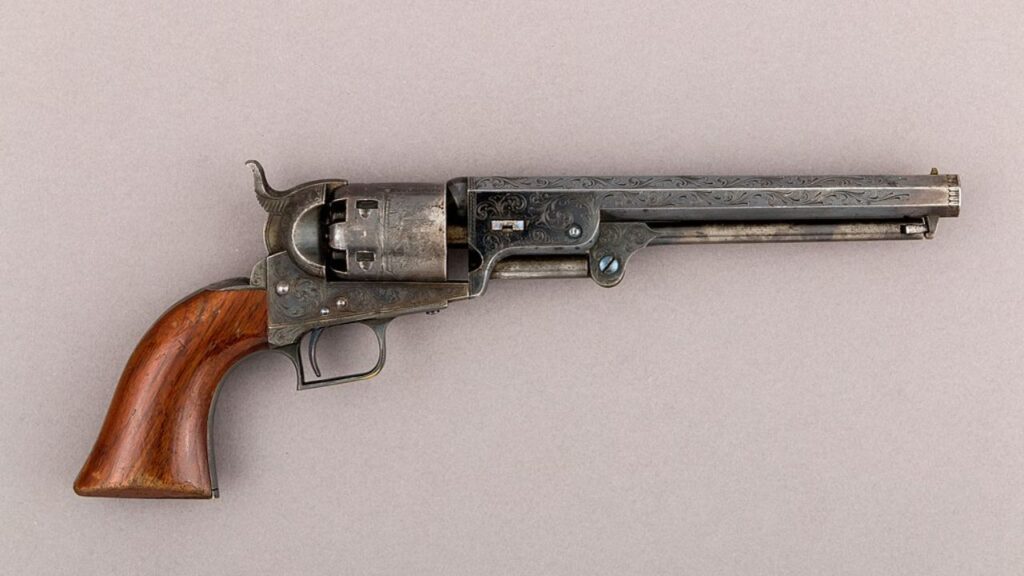
While Colt’s 1851 Navy revolver wasn’t a traditional single-shot dueling pistol, it became a part of several infamous 19th-century showdowns. Chambered in .36 caliber, its six-shot cylinder gave users an advantage when conflicts escalated beyond a single exchange.
Wild West gunfighters and Southern gentlemen alike carried the Navy for personal defense and, at times, for high-stakes confrontations. Its accuracy, balance, and manageable recoil made it one of Colt’s most iconic designs, shaping firearm culture and its role in historical disputes.
*This article was developed with AI-powered tools and has been carefully reviewed by our editors.

